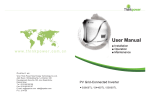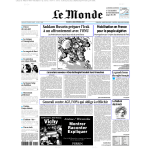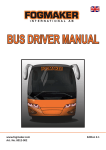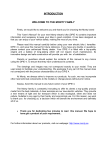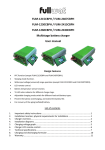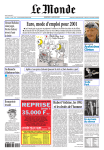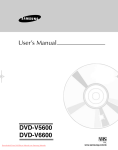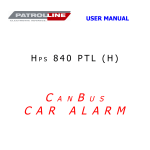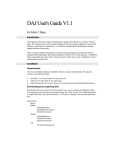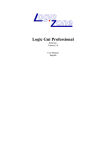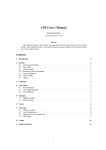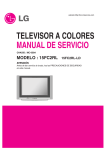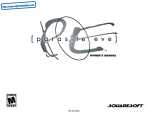Download User Manual TS600 IRA
Transcript
User manual User Manual November 2007 Project TS600 IRA 2BG s.r.l. 18, Monte Bianco street ZIP 35018 – San Martino di Lupari (PD) ITALY 2BG s.n.c. 1-1 User manual 1. 1.1. Introduction 1-3 Presentation ................................................................................................................................... 1-3 2. Warranty 2-4 3. Transport and Installation 3-5 3.1. Transport ........................................................................................................................................ 3-5 3.2. Installation ...................................................................................................................................... 3-5 3.2.1. Locating and levelling ............................................................................................................ 3-6 3.2.2. Elettric Connection ................................................................................................................. 3-7 3.2.3. Pneumatic Connection ........................................................................................................... 3-7 4. Machine description 4-8 4.1. Structure ....................................................................................................................................... 4-10 4.1.1. Flux tank ................................................................................................................................ 4-10 4.1.2. Ribbon Cutter ........................................................................................................................ 4-11 4.1.3. Ribbon Rail ............................................................................................................................ 4-12 4.1.4. Load Ribbon .......................................................................................................................... 4-13 4.1.5. Baskets Movement and Basket Charge.............................................................................. 4-14 4.1.6. Cells Centering...................................................................................................................... 4-15 4.1.7. Welding Belt .......................................................................................................................... 4-15 4.1.8. Welding Zone ........................................................................................................................ 4-16 4.2. Hardware....................................................................................................................................... 5-18 5. Process Description 6-19 5.1. General description ..................................................................................................................... 6-19 5.2. Soldering operation cycle ........................................................... Errore. Il segnalibro non è definito. 5.2.1. Uses........................................................................................................................................ 7-20 5.2.2. Automatic cycle .................................................................................................................... 7-20 5.3. PANEL TP177B............................................................................................................................. 8-21 5.3.1. Recipes .................................................................................................................................. 8-40 5.4. ALARM LIST ................................................................................................................................. 8-41 2BG s.n.c. 1-2 User manual 1. Introduction 1.1. Presentation This manual purpose is to introduce you all the components of the system that form the “TS600 IRA” for the soldering of photovoltaic cells and respective functions. The intention is to furnish a manual that is a valid help for the operator, to understand the exact operation of the various processes, and for maintenance personnel, to assure an exhaustive support to understand the system automation. The manual first part describes the machine operation process; then a second part where is describing the working process following the management interface (HMI, Human Machine Interface) through which the operator can plan and monitoring the machine operation. The fourth part of the manual explain the recipes database architecture: the recipe filing and the loading functions are illustrated. The fifth part of the manual is reserved to the alarms description managed by the PLC and the correct procedures to acknowledge and fix its. Don’t observe of the follow instructions in this manual or the wrong use of the machine means to cancel ts600 warranty Check when the machine will arrive the conditions; if is not happen give to Penergy a written communication not later than 4 days. To repair, corrections or modifications is necessary to communicate this to manufacturer Don’t remove the machine safety barrier! ; this could be dangerous for the operators 2BG s.n.c. 1-3 User manual 2. Warranty The good quality of the material to build the machine is guaranteed The length of the warranty is of 12 months. Are not covered bad working caused from inexperience, employment mistake, bad maintenance or consumable part wear and tear. Faulty parts will be changed in place from licenced technicians. Trip, food and accommodation will be charged to the costumer. Expenditure to change damaged parts for a bad use of the machine will be charge forward like the expenditure for the trip, food and accommodation of the technicians The consumable parts ARE NOT inside the warranty. Important: the estimate of damaged parts to change or to repair will be supervised from qualified and authorized technicians to set out the problem sort and possible warranty change It will be a costumer task to check the machine as soon as arrived to estimate every damages for the transport. If there will be this problem, the costumer will have to give written communication not lather than 4 days. The problem estimation will be debated from the costumer and from transport supplier THE WARRANTY STOP IF: • • • • • Manual instructions are not respected There will be modifications without authorization Programmed maintenance is not followed The maintenance will be done from not licensed people The machine will be used from a different purpose from that designed 2BG s.n.c. 2-4 User manual 3. Transport and Installation 3.1. Transport The machine is packed in wood crate with mechanical movement blocked; every pack modification can be asked at least 1 month before the expected expedition date. The crate can be moved with a forklift truck or a tackle that are able to support the whole weight of the crate. To lift or to move the machine with extremely attention avoiding blows that they can damage the structure. To arrange before machine arrive the place of installation thinking impediments, escape way, safety working place to avoid another movement. 3.2. Installation At the moment when you decide the working place of the machine , think over the follow shrewdness: • • • • • The working place have to be protected from atmospheric conditions The working place has not to have a temperature upper 30° and an humidity upper 90% The floor have to be perfectly flat and support the machine weight The electric connection have to be done with a cable of right section and support the absorption of the machine (4x6 mm² with a lenght not over 20 m) Air connection has to guarantee to the machine a pressure of 7 bar constant 2BG s.n.c. 3-5 User manual 3.2.1. Locating and levelling Position kindly the machine over the floor, check that the structure is perfectly horizontal. Adjust the various height lifting or lowering the tabber stringer feet Adjustable feet If you have to move the machine to use a right forklift truck and insinuate the extensioned clamp of the same length of the machine in the zones pointed in the picture. To pay attention in this procedure because you can damage some movement of the tabber stringer and so it will not be possible to use it lifting zone 2BG s.n.c. lifting zone 3-6 User manual 3.2.2. Elettric Connection Check that the voltage is that needed from the machine like pointed in the CE label 3.2.3. Pneumatic Connection Connect the compressed air to the machine with a fast connector and with a 10 mm air pipe. Check at regular intervals that there is not water in the air connections. The machine is tested and its working is guaranteed at constant 7-8 air pressure Pressure Gauge Pressure Regulator 2BG s.n.c. 3-7 User manual 4. Machine description The TS600IRA is an automatic machine to solder by the ribbon photovoltaic cells from 4” to 6” The cells are positioned on charge basket , while the ribbon wheels on provided rail wheels. When the cycle is started a cell is collected from the basket and positioned over the centering plate while the ribbon is arranged on soldering belt. After centering, the cell is carried on the soldering plate and etc ..until the celll will be under the lamps where it will be soldered. Reached the fixed amount of cells, the string will be cut from the other cells by a shearing machine and then brought, by a unload belt, to the flip where it will be discarged manually o adjusted for the next working 2BG s.n.c. 4-8 User manual backward backward z + x + + forward y forward 2BG s.n.c. 4-9 User manual 4.1. 4.1.1. Structure Flux tank This tank is filled of flux necessary to solder ribbon over the cells. Is important don’t exceed the maximum limit to avoid the leakage of the product. The operator has to fill manually this tank when the flux level will became too low; in this event the machine will give too you an alarm of “flux lacking” The flux is a product highly inflammables and so is important to touch with with attention and to wear safety clothes like gloves and protective glasses Filled Maximum Level Tank Knurled Cylinder Smooth Cylinder Flux Presence Sensor 2BG s.n.c. 4-10 User manual 4.1.2. Ribbon Cutter This part of the machine cut te ribbon through 2 pneumatic cylinder. There are 2 rails to check the ribbon positioning to direct the ribbon accuracy over the bus bar. The ribbon then is closed through 2 pneumatic cylinder to keep it still after the cut. This part have to be cleaned daily from remainig flux left from the vaporization. Pay attention when you clean this part because there are blunt and sharp parts. We suggest to use no-cut gloves Shearing Machine RibbonLocking RibbonPostionRegulating 2BG s.n.c. 4-11 User manual 4.1.3. Ribbon Rail In this part of the machine the ribbon is directing before the flux tank. There are 2 presence sensors that signal the breakage or the ribbon ending,. Ribbon Regolation Guide Ribbon Presence Sensors 2BG s.n.c. 4-12 User manual 4.1.4. Load Ribbon In this zone the ribbon wheels are charged. Check that wheels movement are free to have a good fluent draught 2BG s.n.c. 4-13 User manual 4.1.5. Baskets Movement and Basket Charge There are 2 equal charge units that they have the same function in different time; this to allow to charge a basket while another is working without to stop the machine During the cycle the cells are lifted up till the optical fibre or, if there are not cells, till to reach the high extra running sensor. In this way the basket plate will move to the other side and so will be possible to charge the cells in the other basket. When the cells will reach the optical fibre, the movement to direction high is stopped and so will be possible to take the cell and move it to the centering plate Extrarunning Sensors Optical Fibre 2BG s.n.c. 4-14 User manual 4.1.6. Cells Centering When the cell is taken from the charge basket, is positioned over the centering plate and the vacuum turned on to have the cell immobility in centering step. Then the plate will move in 3 dimensions to center in accuracy way the cell ( this is possible by an OMRON vision system) When the centering is done, the vacuum is turned off, the cell taken end put on the welding belt Vacuum Holes 4.1.7. Centering Plate Welding Belt The cells and the ribbon are loaded on the welding belt and kept in position through the vacuum holes. The welding belt is divided in 3 zones and they can be heat up in different way to avoid thermal shock to the cell structure. In each zone there are thermocouple to check in real time the plate temperature Vacuum Holes zone 3 zone 2 zone 1 2BG s.n.c. 4-15 User manual 4.1.8. Welding Zone The welding is done through infrared lamps climbed on a solder pick up. When the cell arrives on the zone 3, the pick goes down and the lamp turn on for a set time allowing the ribbon soldering. There are needles climbed on the springs to hold down and flat the ribbon in soldering process. Pay attention to the pressure regulation on the cells of this structure because a good regulation means a good soldering and a good string appearance. The alignment regulation vertical and horizontal have to be done by qualified technician, because a delicate operation Welding Position Regulator Lamps Pressure Regulator Lamps Position Regulator Infrared Lamps Welding Needles 2BG s.n.c. 4-16 User manual 4.1.9. Unload Zone Reached the set welding cells number, the shearing machine divides the string from the next one. Then the string is dragged out from the unloading belt to intake point. The flip lean on the string , the vacuum is turned on and kept to unload position Shearing Machine ExtraRunning Sensor Flip 2BG s.n.c. 4-17 User manual 5. Hardware Following there is a hardware components list that composes the “tabber stringher” automation. The first chart includes the description of the PLC Vipa and the second the interface HMI. Codice Prodotto VIPA 215-2CM02 CPU 215 CAN VIPA 221-1BH10 VIPA 222-1BH10 VIPA 232-1BD51 VIPA 240-1BA00 VIPA 208-1DP01 OMRON F500 Digital Input DI16xDC24V Digital Output DO16xDC24V 1A Analog Output AO4x12Bit Serial Interface Profibus Dp Master Omron F500 Vision System 1 3 1 SMC 51EXP2 MURR 56501 MURR 56622 MURR 56623 MURR 56478 GateWay Unit EX500 Series SMC Bus Node Digital Input Module Digital Input Module Analog Input Module 1 1 3 2 1 Codice Prodotto 6AV6 545-OBB15-2AX0 OMRON F150-M05L. Descrizione touchscreen Panel SIEMENS TP170 Camera Monitor OMRON 2BG s.n.c. Descrizione Quantità 1 1 1 1 Quantità 1 1 5-18 User manual 6. Process Description 6.1. General description The “Tabber Stringher” is a machine managed by an only operator (for the safety of the personnel himself) that, through a cycle pre-planned, solders, connecting in series, the cells in the loading baskets, unloading the string on a flip axis, when reached the number of cells for string pre-planned. In picture 1 the process phases are show. CELLS AND RIBBON LOADING SOLDERING PRESTART VALUES ATTAINMENT UNLOADING ON CONVEYOR CELLS LOADING FROM BASKETS CELL CENTERING TRASLATION OF THE STRING All the operation parameters are stored in recipes in the line supervision panel. 2BG s.n.c. 6-19 User manual 7. Cycle of operation 7.1. Uses • EMERGENCY BUTTON: pressing this button, positioned on the TS300IRA side pulpit, you interrupt the electrical power of the electric cabinet uses, because a danger condition for the operator during the working process. • AUXILIARY CIRCUIT LAMP: lamp positioned on the front of the pulpit that signals the power to all the auxiliary circuits of the electric cabinet. • SIREN: positioned above the tabber stringher, signals with an acoustic signal, it signals the alarms presence. • RED LAMP: positioned above the tabber stringher it signals the presence of an alarm. • GREEN LAMP: positioned above the tabber stringher it signals automatic cycle to fixed light and values of prestart reached to flashing light. • PANEL TP177B: positioned on side pulpit of the tabber stringher it is the interface HMI in which you can planned and to modify all the soldering parameters and manual commands for machine testing. • OMRON F150 M05L positioned on side pulpit of the tabber stringher it is the monitor of the two cameras. We can see the actual visualization of camera switching between cam1 (quality control) and cam2 (centering control) 7.2. Automatic cycle The soldering cycle, as mentioned in the general description, is composed by various phases: cells loading in the special baskets and ribbon introduction through the centering rolls; attainment of the pre-start values, in which the machine, will reach automatically the values pre-planned, automatically telling, through special signalling the conclusion of the phase; search axis origin; start cycle, phase activated through the special button on the panel during which it will happen the load, the centering and the soldering of the cells; unloading of the complete string. Under start cycle conditions the TS600 Ira, after unloaded a complete string, it will automatically continue the production of a new one. 2BG s.n.c. 7-20 User manual 8. PANEL TP177B It is a LCD keyboard with touchscreen commands: that means that pressing the screen in the desired field you can make various operations like the insertion of a button or the change of a datum. The numeric data introduction happens according to following procedure: 1. 2. 3. 4. Pressing on the field desired for making to appear the keyboard touch. Inserting the desired value digitizing the special numbers. Giving confirmation with the enter button. The numerical keyboard disappears and the introduced value is stored in the PLC. ON LINE PARAMETERS SERVICE PASSWORD ALARMS RECIPE ACKNOWLEDGE Picture 2 Following are proposed the pages showed in the picture 2 with the explanations of all numerical fields and texts contained in each page. 8.1. Omron monitor F150 In this monitor we can see the image send from the camera, in this way we cane have a visual check and immediate of the centering. We can set the running parameters, catch reference image for centering, set recipes 2BG s.n.c. 8-21 User manual 8.2. Control pages The page “HOME” it is the start page of the keyboard. All the pages have in common the superior part of the screen, where are situated: the buttons to access the various submenu of laminator management, the operation mode “WORK” or “SERVICE”, current date and time; this to give an easy and practical understanding of the various commands. 2BG s.n.c. 8-22 User manual The first page “ONLINE” contain part of the values with which the tabber stringher is working: the set values and measured values of the centering and soldering plates temperatures and a counter for soldered cells: you can access to it pressing the key “ONLINE” as shown in picture 2. In it the operator can see the process values, can turn on the pre-start cycle through the special button visualized in picture, to start the axes search origin and to start the automatic cycle. • Pre-start : Pressing this button the TS300IRA starts heating the centering and soldering plates, up to the temperature setpoint attainment. • Origin search : with this command, after having started the Pre-start, it performs an axes position calibration, for a correct positioning during the automatic cycle • Start: With this button it start the real automatic cycle of the machine, that goes from the basket cells loading, to the complete string unload on the control glass . • Plates Temperature: In this area there are the temperature regulation data of the soldering (right part) plates. • Lightening time: In this field you can plan the time during which there are power on infrared lamps during the automatic soldering cycle. • Ribbon cutting: pushing this button you can make the ribbon first heading • Lamp temperature: Field in which the current temperature of the lamp is show. • Cells counter: In this field you can see the number of the cell loaded on the welding belt from the latest start 2BG s.n.c. 8-23 User manual The second page “ONLINE” contain four areas each of them related to a phase of string production. In the area related to the RIBBON operator has the possibility to visualize the position of ribbon deposit on the soldering plate and to manually modify the length of ribbon cutting. In the cells panel it is possible to plan the cell size, the interleave between cells and the number of cells that form the final string. In the field lowest quality cell is possible to set the threshold for the waste cells In the page inferior area, there are the settings for the number of first cells and the different lightening time to apply to them. The counter shows the total amount of cells done. The only way to reset this counter is push the lower button. 2BG s.n.c. 8-24 User manual the third page online contain the display of the set temperature and the real temperature of the three zone of the welding belt. We can see the set temperature and the real temperature of the welding lamps Lamps off button allow you to exclude the lamps flashing. This is very useful in test mode becasuse we can see the complete cycle without welding cells 2BG s.n.c. 8-25 User manual The first page “Parameters” contain all the values to give correct timings and functionality to all the mechanical and electrical parts: you can access to this page pressing the key “Parameters” as shown in picture 2. The change of these values must be changed only by competent technical personnel. All the values inside it can simply be modified pressing with a finger the interested field, to digitize the new value on the keyboard appeared in popup and to confirm with the “enter” button. The inserted data will instantly be transferred to the machine. The modifiable fields are following described: • General alarm waiting time: this field is the time in seconds to filter all the generic alarms, after this time alarms will be signalled. • EV alarm waiting time: this field is the time in seconds to filter the EV related alarms, after this time alarms will be signalled. • Load cells basket blowing time: duration of the air blowing impulse on the load baskets, the electrovalve opens on the descent of the load cells cilynder and closes after the planned time; the air blowing has the function to divide the cells during the loading operation • Unload traslator distance from string cut: distance between string cut and the middle of unload translator • String unload vacuum time: time during which the load axis wait the vacuum making on the first present cell in the basket before to load it on the centering plate; this to guarantee that there are enough vacuum in the load suckers to lift the cell • Vision system recipe numbers: recipe number set through vision system 2BG s.n.c. 8-26 User manual • Home position: start position of the pliers after zero setting • Pick up position: position that the pliers axis reaches in the moment of ribbon collecting • Advance position: Pick up: position that the unload axis reaches for to pick up the cells after the soldering • Delta out position: position which the pliers axis reaches after unload the ribbon on the cells prepared above the soldering of welding. • Raising piston reset measure vertical position of the pliers, after unloaded ribbon and moved to home position 2BG s.n.c. 8-27 User manual • Lamps pre-start time: time of preheating lamps, activated by the command of pre-start; it has the function to guarantee an optimal soldering beginning from the first cell. • Welding breath time: duration of the cooling air blow after the lamps turning off. • Lamps piston reset time: time between the turning off of the soldering lamps command of leaving lamps. • Lamp 1 illuminance (ext. side): lighting of the exterior side lamps • Lamp 2 illuminance (int. side): lighting of the load side lamps • Lamps max temperature: max temperature reachable from the lamps • Welding enable from cell number cells number after which the lamps start welding 2BG s.n.c. 8-28 User manual • First lenght zone: the lenght of first zone • Second lenght zone: the lenght of second zone • Cut lenght: the distance between the first cell depot and the strings shearing machine 2BG s.n.c. 8-29 User manual In this page we can set the speed of load traslator, welding belt, pliers and the quality control tool Pliers have 2 velocity, one of di this is the velocity of the ribbon hauling that we can set in the field "ribbon speed". For the other movement pliers use the velocity setting in the first field 2BG s.n.c. 8-30 User manual In this page we can set the speed of unload belt, first and second basket, flip movement. To change the speed of unload belt is better to use the k speed parameter to preserve the sincronization 2BG s.n.c. 8-31 User manual In this page we can set the centering speed and home position. We can also to add an offset to the coordination to adjust the centering in the best possible way 2BG s.n.c. 8-32 User manual • Serial data: centering data from second cam expressed in pixel • Expected movement: data from previus field (expressed in step • No ok quality threshold in this field we can set the lowest cell percentual correspondence. If this threshold isn’t oversubscribed the machine stop to give the operator the possibility to adjust manually the cell or to change it • Reset quality non ok when the machine is stopped to a too low correspondence we can reset the machine by this button (after the necessary changes to the cell) • Correction: the parameters of the previus page 2BG s.n.c. 8-33 User manual The page “Alarms” show all the present alarms in the machine. These will subsequently be described in the alarm paragraph. You can access this page pressing the button “alarms” as shown in picture 2. Additionally to this page there are also two buttons following described: ALARMS RESET: Button which cancel the alarms that are not more presents in machine. To quiet the alarm siren, there is a button placed on the right in the superior bar of the page, suitable in picture 2 with the label “acknowledge" 2BG s.n.c. 8-34 User manual In these pages it is possible to modify the operation parameters of the machine motorized movements. The change of these values must be changed only by competent technical personnel. These commands are enable only with the machine in manual mode. To activate this state you have to push the "man/aut" button. The manual commands have not stoppage so you have to pay great attention. Following the detailed description of the modifiable fields to activate the command 2BG s.n.c. 8-35 User manual 2BG s.n.c. 8-36 User manual 2BG s.n.c. 8-37 User manual In this page there are buttons to move in 3 dimension the centering plate. Is very usefull when you exceed an extrarunning sensor and you want came in the working range before the origin search 2BG s.n.c. 8-38 User manual PASSWORD The page “Password” contain the management of all the accesses to the various menù and change parameters of the operative panel. You can access to thios page pressing the key “Password” as shown in picture 2. The management of the qualifications to the various functions is by levels: a high level correspond to more accesses operator can have. As in picture “Administration Password” the parameters to be inserted are: the username, the relative password and the corresponding access level. The levels are described following: 1. MANUALS 2. ONLINE 3. RECIPES 4. PARAMETERS 5. PASSWORD The button “LOG OUT” set the access level to zero and visualizes in the operative panel the page “Home” 2BG s.n.c. 8-39 User manual 8.2.1. Recipes RECIPE In the page “Recipes” operator introduces all the inherent parameters to the cycle of operation, so that to create a file to transmit to the PLC in a second moment. In this management are created and stored all the set-point values which serve for the production of all the different types of strings. In the figure “Recipes” there are some management buttons, its are described here departing from left: • Create new recipe: pressing this button all the values in the central window are reset and a new “set of data” is created, a name can be assigned pressing the corresponding field (Name set of data), inserting the desired name using the keyboard that appears and pressing “enter” when finished. • Save recipe: with this button, after created a new set of data,assigned him a name and modified the relative parameters , it is possible to save the recipe in the internal memory of the operative panel. The recipe will subsequently be open selecting the relative name of the set of data in the specific field. • Delete recipe: this is the function to delete the current recipe visualized in the operative panel. This operation is permanent and then we recommend the maximum attention doing that. • Transmission recipes to the PLC:with this button the panel transmits to the PLC the current recipe. From this moment the visualized values go to overwrite those in the PLC memory • Reading recipes from the PLC: pressing this button the panel read the current values of operation in the PLC memory and it visualizes them in the chart; here you can modified and saved inserting a new name in the field “name set of data” and pressing the button “salute recipe” 2BG s.n.c. 8-40 User manual 8.3. ALARM LIST Following the complete list of the possible system alarms: ALARM POSSIBLE CAUSE RESTORATION The emergency button has been pressed. Restore the emergency to give back tension. The consumption of the motor is too raised or the command relay doesn't respond. The consumption of the motor is too raised or the command relay doesn't respond. Verify if there are short-circuits and the real consumption; then reset the protection. Verify if there are short-circuits and the real consumption; then reset the protection. AIR LEVEL ALARM Air pressure too low Chek the air pressure WATER PUMP ALARM The consumption of the motor is too raised or the command relay doesn't respond Verify if there are short-circuits and the real consumption; then reset the protection. LAMPS TEMPERATURE ALARM Lamps temperature has passed the max temperature set Check the correct lamps working EMERGENCY STOP VACUUM PUMP ALARM FLUX REEL MOTOR ALARM LOAD AXES POSITION ALARM PLIERS AXES POSITION ALARM The position of the interested axes has overcome the overrun switch. The position of the interested axes has overcome the overrun switch. The electrovalve is in short-circuit BASKET MOVEMENT CYLINDER or the command relay doesn't ALARM work. Turn off the principal cabinet and manually act on the interested axes bringing it toward the central position. Close again the general switch and start the “Search origin” procedure. Turn off the main cabinet and manually act on the interested axes bringing it toward the central position. Close again the general switch and start the “Search origin” procedure. Verify that the electrovalve is working and that the fuse is not broke. Check the control relay. Replace the fuse or the relay. Verify that the electrovalve is working and that the fuse is not broke. Check the control relay. Replace the fuse or the relay. Verify that the electrovalve is working and that the fuse is not broke. Check the control relay. Replace the fuse or the relay. Verify that the electrovalve is working and that the fuse is not broke. Check the control relay. Replace the fuse or the relay. LOAD CELLS CYLINDER ALARM The electrovalve is in short-circuit or the command relay doesn't work. CENTERING CELLS STORE PISTON ALARM The electrovalve is in short-circuit or the command relay doesn't work. LAMPS MOVEMENT CYLINDER ALARM The electrovalve is in short-circuit or the command relay doesn't work. CUTTER CYLINDER ALARM The electrovalve is in short-circuit Verify that the electrovalve is or the command relay doesn't work working and that the fuse is not broke. Check the control relay. Replace the fuse or the relay. . 2BG s.n.c. 8-41 User manual The electrovalve is in short-circuit CUTTER MOVEMENT CYLINDER or the command relay doesn't ALARM work. Verify that the electrovalve is working and that the fuse is not broke. Check the control relay. Replace the fuse or the relay. Verify that the electrovalve is working and that the fuse is not broke. Check the control relay. Replace the fuse or the relay. STRING CYLINDER ALARM The electrovalve is in short-circuit or the command relay doesn't work. RIBBON PRESENCE ALARM One of the ribbon spools are finished Replace the empty ribbon spool. The interested basket is not present it is not correctly positioned The interested basket is not present it is not correctly positioned To insert the basket of loading in its own center or to verify its correct positioning. To insert the basket of loading in its own center or to verify its correct positioning BASKET 1 PRESENCE ALARM BASKET 2 PRESENCE ALARM • 2BG s.n.c. 8-42 Welding Belt Motor(18M1) Pliers Axis Motor(19M1) Charge Axis Motor(17M1) Centering Motor X (21M1) Centering Motor Y (21M2) Centering Motor Z (21M3) Basket Charge Motors(24M1) Basket1 Motor(15M1) Basket2 Motor(16M1) UnloadBeltMotors(20M1) FlipMotor(23M1) BeltExtraRunning(49BFC2) FlipExtraRunning(23FC1) Ribbon Dx Presence (45FC1) Ribbon Sx Presence (45FC2) Backward ShearingMachine (44FC3) Forward ShearingMachine (44FC2) Open ShearingMachine (44FC1) Pliers ExtraRunning (19FC1) Charge ExtraRunning (17FC2) Charge ExtraRunning (17FC1) LampsSet Down(43FC1) LampsSet Up (43FC2) StringShearingMachine(46FC1) Pressostato (16P1) Pliers ExtraRunning 2(19FC2) Charge from Low Centering (41FC4) Charge from High Centering (41FC3) Flux Sensors(49BFC3) Centering Home Asse X (22FC6) Centering Extra running Axis X (22FC3) Centering Home Axis Z (22FC4) Centering Extra running Axis Z (22FC5) Centering Home Axis Y (22FC1) Centering Extra running Axis Y (22FC2) String Sensor(49BFC1) Charge from Basket Low (41FC1) Charge from Basket High (41FC2) Basket Presence2 (40FC4) Basket Presence 1 (40FC3) Basket Position 2 (40FC2) Basket Position 1 (40FC1) Basket 1 Low (15FC2) Basket 1 High (15FC1) Basket 2 Low (16FC2) Basket 2 High (16FC1) Optical Fiber Cells Presence(15FO1)


















































